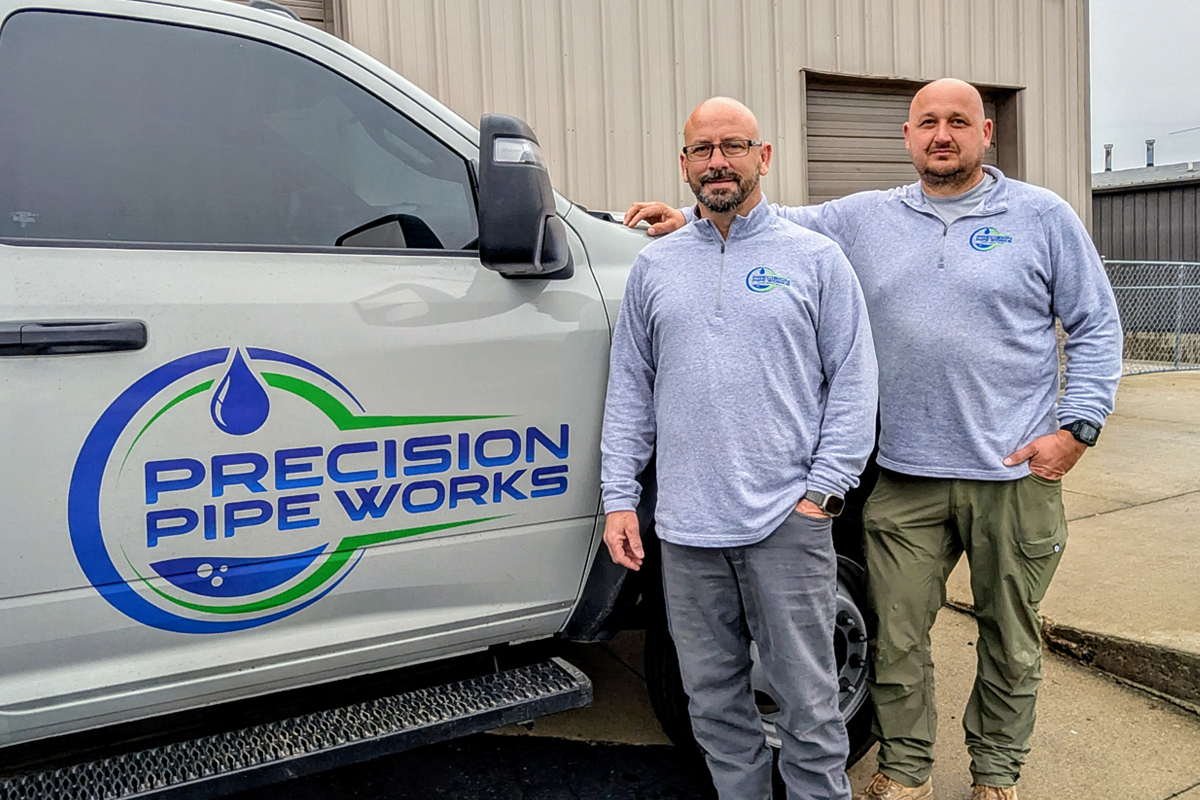
Improved Design and Constructability through Four Trenchless Installation Methods for One HDPE Pipeline Project
September 23, 2015
 When approaching any project, no matter the size or complexity, it is important to keep an open mind. With different challenges, every project should be approached in a deft manner. There can be many possibilities to complete a project, but there is a special recipe that blends the ideas of the engineer, the needs of the client, and the site constraints for the contractor.
When approaching any project, no matter the size or complexity, it is important to keep an open mind. With different challenges, every project should be approached in a deft manner. There can be many possibilities to complete a project, but there is a special recipe that blends the ideas of the engineer, the needs of the client, and the site constraints for the contractor.The goals and efforts contributed by Reiss Engineering (REI), South Seminole and North Orange County Water Transmission Authority (SSNOCWTA), and Murphy Pipeline Contractors (MPC) were used to make the Eagle Circle force main replacement a smooth, deft, efficient and practical project.
The Eagle Circle force main replacement located in Casselberry, Fla., entailed five pipeline installation methods: pipe bursting, horizontal directional drilling (HDD), open-cut, sliplining, and jack and bore. The existing force main pipeline consisted of 3,950-ft, 16-in. ductile iron pipe and 4,400-ft, 10-in. C200 PVC. The existing line was replaced based on an asset management plan that identified risk-based, high priority evaluation infrastructure. The 16-in. pipeline was believed to be experiencing lower wastewater flows than designed. This was verified by the existing hydraulic model.
The reduced flow was the result of an existing lift station being diverted to an adjacent force main. This allowed the project to progress with a larger selection of pipe installation methods.
HDPE was chosen for pipe material based on its versatility in the field, excellent corrosion resistance for raw wastewater service and superior cyclic fatigue resistance. Similar to the HDPE pipe selection, pipe fitting and connections used butt fusion, fused fittings and electrofusion couplings. HDPE mechanical joint adaptors were used when the new HDPE pipe was connected to the tie-in locations.
The Eagle Circle project used a temporary bypass line to assist with the new pipeline installation. The initial plan was to establish a bypass along the 10-in. pipe bursting portion along the golf course of the existing force main. The other 16-in. section of existing force main would be kept in service with parallel replacement. This construction method would have required the use of jack and bore at five locations. In order to reduce the construction impact and cost of the project, REI and MPC shortened the required length of bypass piping and completely took the existing pipeline out of service by tying the bypass into a separate force main approximately 2,080 ft away. This alteration to the construction process resulted in approximately $115,000 of cost savings, and reduced the amount of jack and bore locations to only one.
Trenchless installation methods were desired by SSNOCWTA. Pipe bursting was the first method reviewed to replace the existing force main. During permitting coordination with the County right of way, it was determined pipe bursting was not permitted under County roadways. The City of Casselberry and golf course did permit pipe bursting under their roadways. Therefore, supplementary pipe installation methods were required for local roadway crossings.
Following the design process, a total of five HDPE pipe installation methods were chosen including: 4,400 ft of pipe bursting, 54 ft of jack and bore, 420 ft of HDD, 3,296 ft of sliplining and 180 ft of open cut.
HDD was chosen based on a combination of its qualities and site restrictions. The factors that contribute to the decision of HDD vs. sliplining and open-cut are the lack of room and easement to work in the specified area, County requiring no roads be damaged during construction and the congested utility corridor located in the area. HDD allowed the pipeline to be directed under a masonry wall, and prevented the damage of roadway, damage of existing utility lines, and interference of daily roadway utilization.
The open-cut method was only used for directional changes, plug valves, air release valves, a pit, or a fusion. The frequency of open-cut occurrences was kept at a minimum in order to save time and prevent extensive damage to above-ground, established landscape and roadways.
Jack and bore was chosen for a small portion of the job based on a constraint that was initially given by the County. The County would not allow any damages to occur to their roadways during the project.
Sliplining involved minimal equipment, digging and was the fastest installation method during the project. This method was a great tool during the portion of the Eagle Circle force main replacement project where the 16-in. force main was downsized. The ability to slipline was a great addition to the project, as it introduces multiple benefits such as pipe structural integrity, the prevention of underground space consumption, not having to remove and dispose of the old pipe and the reduced potential of damaging existing utility lines. The financial benefit from sliplining was the reduced number jack and bores required under existing roadways, as pipe bursting or open-cut was not allowed.
Static Pipe bursting is carried out with equipment known as a bursting machine, which operates hydraulically, with rods, and a pipe bursting head. Rods are first fed through the existing pipe using the rig, which is setup in a pipe bursting pit with support columns. The rods are then connected to the pipe bursting head, which is attached to the new HDPE pipe to be installed. The new, larger, or same size HDPE is then pulled by the rig through the existing pipe. During the process, the existing pipe is “burst” and left in the ground. The conditions present during the Eagle Circle force main replacement complimented the ideal conditions for pipe bursting the existing C200 PVC with a one pipe size increase.
The benefits of pipe bursting, when compared to the traditional open-cut method, included the speed of installation, low manpower required, the reuse of already occupied utility line space, absence of existing pipe disposal, and decreased damage to property within the construction area.
The Eagle Circle force main replacement project was successful thanks to the collective efforts of SSNOCWTA, Murphy Pipelines, and Reiss Engineering. The project was completed ahead of schedule, experienced little delays and imparted no unintended damage to the existing site. The use of multiple pipe installation methods reduced the cost of the project, created less potential for existing utility line damage, and incorporated several benefits to the project.
The Eagle Circle project incorporated an advantageous bypass route that reduced the amount of jack and bore locations required and amount of bypass piping required.
The tie-in location located under the roadway was completed using an existing gate valve rather than having to carry out a wet tap which avoided additional road damage. Incorporating trenchless technologies such as pipe bursting, sliplining, jack and bore and HDD reduced roadway damage, golf course disruption, and involvement of nearby residents. The additive value of all the advantages incorporated into the project saved SSNOCWTA over $215,000 and a month and a half of construction time. Upon completion of the project, it was found that using existing infrastructure, applying multiple pipeline installation techniques, and keeping a constant line of communication between involved parties can save the client costs and reduce completion time.
Weston Haggen is project manager at Reiss Engineering Inc. Todd Grafenauer is vice president and educational director at Murphy Pipeline Contractors.





